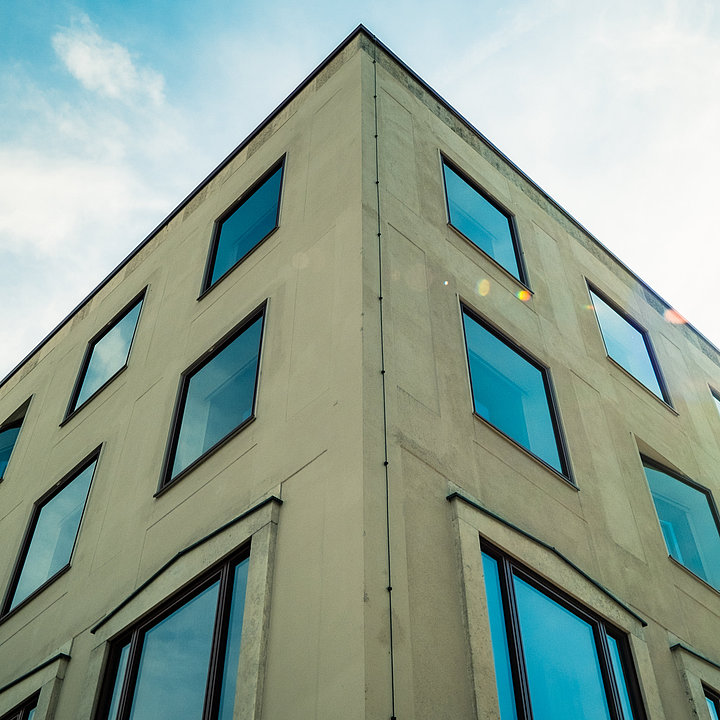Early Developments of the Amerikahaus
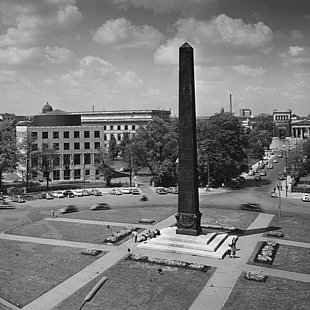
Amerikahaus München
Amerikahäuser were originally established all over Germany right after the end of World War II and devoted to the re-education and democratization of Germans according to the American model. This, however, does not mean that these centers engaged in propaganda, since critical depictions of the United States’ diversity in culture, politics, and society were also emphasized. The Amerikahaus in Munich soon became a major part of Munich’s cultural life and attracted an average of 80,000 visitors per month. Munich’s surroundings were reached by special mobile libraries. At first, the American military government financed these activities, until the United States Information Agency (USIA) later took over.
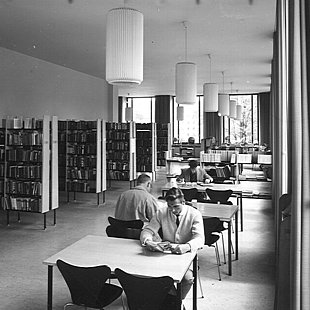
Amerikahaus München
During the Cold War, the Bavarian Center for Transatlantic Relations adapted its main task to the political atmosphere of the time and focused on maintaining and stabilizing transatlantic relations. While the German public was generally excited about John F. Kennedy and the moon landing, critical situations like the Vietnam War and the conflicts within American society posed a special challenge to the work of the Amerikahaus in Munich. Despite many protests directed towards the Amerikahaus during this time, it still managed to maintain its great importance in cultural life, even among the youth who were particularly critical of American politics.
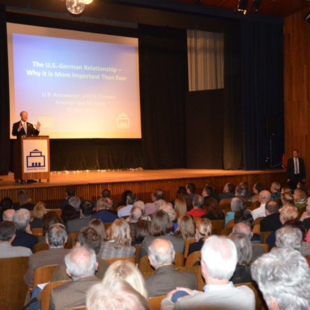
Amerikahaus München
As a result of cost-cutting measures, the work of the U.S. government at the Amerikahaus was discontinued in June 1997. Since then it has continued as a Bavarian institution.
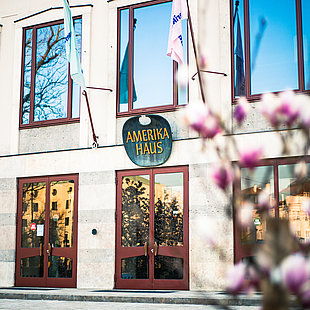
Leonhard Simon
Today it is an open house for citizens and transatlantic players dedicated to cooperation and networking with the U.S.
Overview of Important Dates and Milestones
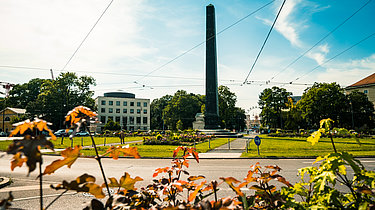
Leonhard Simon
1945
In October 1945, the American military authorities established an “American Reading Room” at Beethovenplatz in Munich. Though it was only accessible to a small group of people at first, the library opened for the general public a few months later in January 1946. Soon, the initial stock of 500 American books and 20 magazines was extended by a donation of literature from Germans living in exile.
1948
The library's collection grew steadily and it had to move twice before relocating to the former “Führerbau” – the Fuehrer’s building – in Arcisstraße in July 1948, where the University of Music and Performing Arts can be found today. The citizens of Munich soon started to call the American information center “Amerikahaus”, and the Americans quickly adopted the term. By then, the center offered a library with a collection of 36,000 books, a reading room for magazines, a children’s library, and a section for movies as well as one for phonograph records. A concert hall, multiple lecture and seminar rooms, as well as exhibition areas, followed.
1953
Control of the Amerikahaus was taken over by the newly formed United States Information Agency (USIA), an organization devoted to public diplomacy.
1957
On May 13, 1957, the new Amerikahaus building, designed by architect Karl Fischer and built by the Bavarian Department of Planning and Building, was opened at Karolinenplatz. The State of Bavaria bore a large part of the construction costs and offered the former location of the Lotzbeck-Palais, which was destroyed during World War II, as building ground. The Amerikahaus building is still the property of the State of Bavaria today.
The Amerikahaus soon became one of the most important cultural institutions in Munich and attracted an average of 80,000 visitors per month. Munich’s surroundings were reached by special mobile libraries and "film mobiles."
1960er
During the Cold War, the Amerikahaus adapted its main task to the political atmosphere of the time and focused on maintaining and stabilizing transatlantic relations. While the German public was generally excited about John F. Kennedy and the moon landing, critical situations like the Vietnam War and the conflicts within American society posed a special challenge to the work of the Amerikahaus in Munich. Despite many protests directed towards the Amerikahaus during this time, it still managed to maintain its great importance in Munich's cultural life, even among the youth who were particularly critical of American politics.
1997
As a result of cost-cutting measures of the U.S. government, the work of the United States Information Agency (USIA) at the Amerikahaus was discontinued in June 1997. Part of its work was continued by the U.S. Consulate General in Munich, but the public library, the student advising center, and the cultural program were in danger.
Politicians, companies, and the general public showed a broad display of support for the continuation of the work of the Amerikahaus. Ever since, the Amerikahaus Munich has been a Bavarian institution.
The so-called “Friends of the Amerika Haus e.V.”, later to become today’s Amerikahaus Association - Friends and Sponsors, were largely responsible for continuing this work.
1998
In January 1998, the Bavarian-American Center was founded and took over the Amerikahaus.
2014
On January 1, 2014, the Stiftung Bayerisches Amerikahaus gGmbH – Bavarian Center for Transatlantic Relations has taken over responsibility of the Amerikahaus.
2016
In January 2016, the Stiftung Bayerisches Amerikahaus gGmbH - Bavarian Center for Transatlantic Relations moved to its temporary location in Barer Straße 19a to accommodate renovations of the Amerikahaus building to modernize its functionality.
2020
As of the end of May 2020, the Bavarian Center for Transatlantic Relations Amerikhaus has moved out of its temporary premises at Barer Straße 19a and moved into its freshly-renovated Amerikahaus building. There, the rooms for events have been outfitted with brand-new technology. This includes our newly minted Karolinensaal, which boasts impressive views of Karolinenplatz below. Since the beginning of July 2020, the exhibition areas of the house are once again open to the general public.
The Amerikahaus Building
The historic building on Karolinenplatz was built as a symbol for the democratic rebirth in Munich and stands for transatlantic friendship. It is exemplary of post-war modern architecture, for which open and transparent buildings are typical - in keeping with the democratization of Germany. In addition, it adapts to its surroundings by being based on the classicist construction on Karolinenplatz.
It is a free-standing, four-storey building block with a square floor plan, with a drum-shaped, copper-clad flat dome over a circular atrium that runs through all floors. The ground floor is clad with Kelheim shell limestone, the windows on the first floor are accentuated by an aedicula-like frame. On the garden side there is a low building in which the theater hall is located.
(Architects: Karl Fischer and Franz Simm, 1955-57)
The general renovation of the Amerikahaus began at the beginning of 2016 and was completed in 2020.
Photo at the top: Amerikahaus © Leonhard Simon
